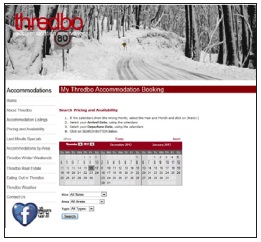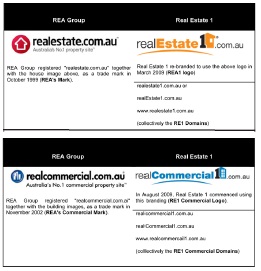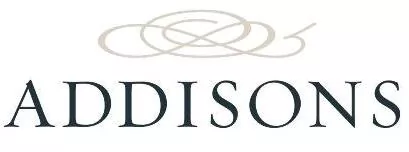Introduction
The law in Australia continues to develop regarding use of competitor brands including use in domain names, in the content of online ads and use of Google Adwords.
Google's position is now clear with the Australian High Court unanimously holding in Google Inc v Australian competition and consumer commission (2013) HCA 1 that Google was not liable for misleading or deceptive conduct in respect of advertisements published using its online Adwords service, in circumstances where other traders' brands were used in online advertisements (Google Case) . The High Court determined that "Google has no control over a user's choice of search terms or an advertiser's choice of keywords" and should not be responsible for misleading or deceptive conduct of its customers, as the advertisements were predetermined by the advertisers, not Google.
While Google's position in Australia may be clear, various advertisements in the Google Case were found to be misleading and deceptive, and the traders held responsible for those advertisements.
So while Google may permit businesses to bid on and use terms (including other traders' trade marks), businesses must tread carefully when deciding what terms to use and how to use them online.
Below we look at some recent Australian cases to review the Australian Courts' views of what will and will not be permissible conduct online and also touch on Google's own policy (post the Google Case).
Google - A Change in Policy
After the Google Case, Google amended its AdWords Trademark Policy (Policy) in Australia to mirror the Policy in other parts of the world.
Before 23 April 2013 (because of decisions in the Google Case in the Courts below) if a trade mark was being used as a Google Adword in Australia, trade mark owners could file a Google Adword Complaint. Google could then (under its Policy) restrict the use. Under the updated Policy, Google no longer restricts advertisers purchasing and using trade marks as keywords in Google Ads (formerly known as "sponsored links"). Google will now only restrict use if the trade marks are used and actually appear in the text of the resulting Google Ad.
As such, trade mark owners can still complain to Google about unauthorised use of their trade marks in ad text (including as a domain name), and Google can take steps to restrict this use. However, the Policy is limited in its application. For example, Google will:
- Only investigate claims where the trade mark is an exact match to the registered trade mark. Near matches to a trade mark will not be investigated. For example if your mark is "Two Left Feet Dance Company" and the mark you are complaining of is "Two Left Legs Dance Company", your complaint is unlikely to be investigated;
- Not review claims where a trade mark is being used as a subdomain. For example, if you own the domain name "twoleftfeet.com.au" and you lodge a complaint about the domain name "twoleftfeet.twoleftlegs.com.au", this complaint is unlikely to be investigated.
Further, a Google Ad may only be taken down temporarily. There are instances where the writers have made a complaint, only to find that an offending Google Ad reappears weeks later. This places a time consuming and costly burden on brand owners and may require multiple complaints regarding the same advertisement.
Additionally, there is a level of scepticism as to Google's commitment to enforcing its own policies. For example, on 24 October this year Google published a large banner ad alongside the search results for "southwest airlines". In 2005, then Google executive, Marissa Mayer, stated:
The Policy, although still an option for brand owners, is not a robust mechanism for dealing with online advertising issues. Particularly given its limited parameters and apparent lack of consistent enforcement by Google.
While traders can be guided by the Policy, other traditional areas of law are also being used in Australia to determine these types of disputes and are shaping the parameters of acceptable conduct, including trade mark infringement, misleading and deceptive conduct and passing off, as some of the cases below illustrate.
Since the Google Case, the Australian Federal Court has dealt with a number of disputes relating to online advertising and related conduct. The cases cover a number of issues, but below we highlight some of the key determinations of the Court that might guide traders as to the boundaries of acceptable conduct in Australia currently. Additionally, these cases also illustrate that whether or not use by one trader of another trader's brand (or part of it) will be found to be unlawful, might also depend on the distinctiveness of the brand itself.
Lift Shop Case
Lift Shop Pty Ltd (Liftshop) v Easy Living Home Elevators Pty Ltd (Easy Living) [2013] FCA 900 dealt with issues of search engine optimisation, a useful strategy for brand owners, as it can propel a website into the ever coveted first page of search engine results.
Lift Shop owns the following Australian registered trade mark:

(Lift Shop Mark).
Lift Shop and Easy Living are competitors in Australia. Both supply elevators and lifts within the same price range and trade within New South Wales, as well as online.
In 2011, Easy Living employed the assistance of a search engine optimisation agency to tailor its website located at www.easy-living.com.au (Website) and the content of its home page, so it appeared higher in search engine rankings for particular key words. In particular, the term "lift shop" was selected as a key word and added into the title of the Website and home page.
Google search results for the term "lift shop" displayed as Easy Living's listing follows:
"Easy Living Lifts | Home Elevators | Lift Shop –
Lift Shop
www.easy-living.com.au
At Easy Living home elevators website you will find details on all of our lifts and home elevators here, which will help you achieve the easy living you deserve."
At the date of the hearing the result displayed: "Easy Living Lifts | Home Elevators | Lift Shop – Home passenger Lifts www.easy-living.com.au/"
Lift Shop commenced proceedings against Easy Living claiming trade mark infringement;
misleading and deceptive conduct; and passing off (although this action was not pursued at the hearing).
The Court found that whilst one of the objectives of Easy Living was to appear in the same search results as Lift Shop, it did not mean that Easy Living was suggesting that it was, or associated with, Lift Shop.
The term "lift shop" was found to have a generic connotation and the Court gave consideration to the fact that other businesses in the same market were also identified if a search for "lift shop" was conducted.
Easy Living did not try to associate itself with Lift
Shop, but instead endeavoured to obtain business by openly
competing with Lift Shop. Easy Living provided evidence that it did
not want to be associated with Lift Shop's business and that
its reputation was not enhanced by any association, as it was a
supplier of European goods and Lift Shop supplied Chinese
goods.
The Court determined there were a number of differences between the entries on the respective search pages reinforcing the view that the parties were not associated. Emphasis was placed on the fact that before any meaningful commercial exchange could take place, potential customers would need to take a further step by entering either of the parties' websites, at which point it would be obvious that the two parties were not related.
The Court found that Easy Living was using the term "Lift Shop" in the title of its Website in a descriptive manner to maximise search rankings. It was not being used as a 'trade mark'. Other businesses in the industry were also using the descriptive term "lift shop" in the title of their websites to boost rankings.
Lift Shop's application was dismissed. This case illustrates the difficulties faced by brand owners who have, as part of their trade mark a descriptive element. Had the facts of this case involved a trade mark without a descriptive element, it is likely that Lift Shop's case would have been a far stronger one and perhaps the ultimate result more favourable.
Thredbo (Ski Resort) Case
In Kosciusko Thredbo (KT) v ThredboNet Marketing (TNM) [2013] FCA 562, KT had, since 1987, owned the head lease of Thredbo, as well as all the mountain operations such as the lift infrastructure and ski school. It also owned and operated the website located at "Thredbo.com.au". KT did not at the relevant time, own any registered Australian trade marks containing the word Thredbo.
TNM leased out a small number of apartments in Thredbo and advertised through the website located at Thredbo.com and had also registered numerous business, domain and company names containing the word "Thredbo".
KT claimed, among other things, that TNM's conduct in registering domain, company and business names containing "Thredbo", and in particular the operation of its websites with similar content and branding to KT's, constituted misleading and deceptive conduct.
KT also claimed that TNM used similar get up to KT, including the use of the colour red, similar fonts, phrases, and slogans. KT also provided examples of confusion from customers making accommodation bookings.

KT also argued that TNM's use of a hyperlink and website address known as the "Genkan link" was sufficiently similar to that of KT's slogan "My Thredbo" (depicted above) to constitute misleading and deceptive conduct by TNM.
The Genkan link contained the address of www. thredbo.com/mythredbobooking.htm and was provided by an automated booking system via email to all TNM's customers. The link opened to a webpage entitled 'My Thredbo Accommodation Booking'.

The Court determined there was no misleading or deceptive conduct in relation to TNM's domain names, slogans or websites (with the exception of those that used the term 'My Thredbo'). Instead, it was found that TNM's conduct constituted legitimate competition in the business of providing accommodation services and facilities.
The Court did, however, find in relation to the Genkan link and the use of "My Thredbo" on TNM's website, that there was a real risk that use of the link could mislead reasonable consumers into believing that the Genkan link was affiliated with, or part of, the business of KT. Relief was available to KT in respect of the Genkan link, however not in relation to the remainder of its claim.
Given the term Thredbo comprises a geographical location, this case is another illustrating the difficulties with protection of marks with a descriptive flavour.
Real Estate Advertising
In REA Group Ltd (REA) v Real Estate 1 Ltd (RE1) [2013] FCA 559 the Court looked at various domain names and logos which had also been registered as trade marks.
Since 1998, REA has operated websites located at www.realestate.com.au and since 2002 at www.realcommercial.com.au. Since 2008, RE1 has operated websites at www.realestate1.com.au and "http://www.realcommercial1.com.au/".
Both REA and RE1 used the webpages as portals for customers wishing to list properties for sale or rent.
In October 2010 REA (the clear market leader) commenced proceedings against RE1 for trade mark infringement, misleading and deceptive conduct and passing off.
REA alleged that RE1 had infringed REA's registered trade marks. See the table below for REA's trade marks and RE1's domain names and logos.

The Court determined that the essential or distinguishing feature of REA's Mark was the domain name in its entirety, as the words "real estate" alone were descriptive of the goods and/ or services of REA. It held that the RE1 Logo was not deceptively similar to REA's Mark and did not infringe REA's Mark as the RE1 Logo was differentiated by the use of the capital E; the orange colour; different font; and the placement of the house after the words "realEstate1", which meant that the words "realEstate1" were the dominant feature of the RE1 Logo.
It was noted that "realestate.com.au" was both a brand and a domain name and that each of the RE1 Domains was deceptively similar to REA's Mark, as it was likely that a consumer would look at the whole of the domain name and that some consumers would not notice the "1". As such they would infringe REA's Mark.
When comparing REA's Commercial Mark to RE1's Commercial Logo, the Court found that the RE1 Commercial Logo did infringe REA's Commercial Mark, as the main feature of RE1's Commercial logo was the word "realcommercial" which was a word invented by REA. It was determined that each of the RE1 Commercial Domains infringed REA's Commercial Marks.
Claims for misleading and deceptive conduct and passing off failed. The Court found that the use of "realestate.com.au" by REA clearly distinguished REA from other competitors in the market. RE1's use of similar branding to REA was not necessarily done with an intention to mislead and deceive, despite RE1's "less than honourable" reasons for using such branding. The use of the number 1 was enough to alleviate consumers of confusion with REA's branding.
Further, it was unlikely that a consumer would mistakenly click on RE1's website, as the first few pages of any search engine results were to pages on REA's websites and if a consumer mistakenly went to an RE1 website, the consumer would immediately know they went to the wrong website given REA's dominance of the market. Further, RE1's organic results and sponsored link activities did not establish that a substantial number of "ordinary" or "reasonable persons" were, or were likely to, have been misled or deceived.
The case also highlights again the difficulties of claiming and protecting a monopoly in a brand that uses descriptive words.
Vendor Advocacy Case
Finally, the case of Vendor Advocacy Australia Pty Ltd (VAA) v Seitanidis [2013] FCA 971. Unlike the REA case, there were no relevant registered trade marks and the matter was determined solely on the basis of misleading and deceptive conduct and passing off.
The claim was brought by VAA, a business conducted by Ian Reid, against Mr Seitanidis (who worked previously for VAA either as an employee or contractor).
VAA routinely used the following types of branding, but did not hold any trade marks.

The conduct complained of by Mr Seitanidis included the registration and use of a large number of domain names including the term "vendor advocacy" and related conduct, including placing various Google Adwords campaigns which:
- contained the phrase 'Vendor Advocacy Australia – a free service to omesellers.';
- referred to the domain 'vendoradvocacy.com'; and
- sought to obtain visitors to Mr Seitanidis' website at the internet domain 'vendoradvocacy com'.
VAA did not claim a monopoly on the term "Vendor Advocacy" which was generally used in the industry, but wished to prevent conduct of Mr Seitanidis which it said would lead to consumers being misled into contacting Mr Seitanidis' business when they were looking for VAA.
In yet another case involving terms which were descriptive and used by other traders, the Court was not satisfied that VAA could prove the required reputation and secondary meaning. Part of the problem was that the focus of the promotion of VAA had centred around Ian Reid, such that the Court did not think consumers would be misled if they came across the terms "vendor advocacy" or "Australian Vendor Advocacy", into thinking it was, or associated with, VAA.
The Court also considered that consumers dealing with online advertising, including use of descriptive terms in similar domain names by different traders, would not necessarily be misled and consumers would be "vigilant when confronted... with many domain names referring the phrase "vendor advocacy"". Use of descriptive terms by competing businesses, likewise, would not necessarily constitute misleading and deceptive conduct. In the circumstances of this case, if consumers were faced with various websites using the descriptive term "vendor advocacy" they would not assume an association between the various businesses, although may be "confused" as to the various vendor advocates. However, this was because of use of the descriptive term and not because of anything Mr Seitanidis may have done.
Unlike REA (who could rely on its trade marks) VAA was not so lucky and failed in its proceedings.
Conclusion
An issue left undetermined to date, is whether or not the bidding on key words by businesses which are registered trade marks of other brand owners, might in itself give rise to some form of infringing conduct or a threat to so engage.
The law in the area of online advertising will continue to evolve in Australia. The cases to date highlight some key issues for brand owners including when brands are chosen which include descriptive words. In these circumstances, stopping use by other traders in online advertisements (or otherwise) will be more difficult and without registered trade marks, perhaps impossible.
Businesses need to remain diligent about their own online advertising strategies, as well as protecting their brands and trade marks from mis-use by other traders.
The content of this article is intended to provide a general guide to the subject matter. Specialist advice should be sought about your specific circumstances.

